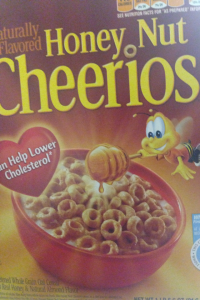http://www.youtube.com/watch?v=K3p0EFtJIn8
This video is titled “A Cat’s Guide to Training Your Human” and I found it by searching the word “cat” on Youtube. However, after watching this video, I learned that there is an entire youtube page dedicated to videos of the same two cats called “Cole and Marmalade.” Although most of the clips only include the cats (there are only two total in the video), a few of the clips also show a male human. The cats appear to be very willing to approach the human, so it likely that the human in the video owns the cats.
The video is a series of clips that is originally introduced as a cat’s explanation of how to get a human to do things in the cat’s favor. However, it seems like the real purpose of the video is to reflect on the “silly” and somewhat humorous things that cats often do. Throughout the video, different captions are displayed on the screen which provide the steps to be used when “training your human”. Following each caption is a corresponding video clip that shows these the scenarios taking place. For example, one caption says “When they clean the litter box, use it immediately afterwards”. This caption is followed by a clip that shows a human emptying a litter box and a cat going into the litter box immediately after. Other captions say “Keep them active. Leave fur.. cat litter… cardboard shreds.. and dead bugs around the home… so the humans feel like they have a purpose.” The clips following these captions show cats making messes and a human cleaning up afterward. Several captions and corresponding video clips similar to these are shown throughout the video. There is also background music in the video that is somewhat silly and is similar to the type of music that is often played in movies when people are trying to be sneaky.
Although this video may have been meant to be humorous and to reach out to other cat owners who can relate to these situations, there are also several parts of this video that correspond with points made by Randy Malamud in The Zoo Spectatorship. In his writing, Malamud writes “One of the pleasures of visiting a zoo is feeding the animals. The act is generous and the pleasure is innocent, although both derive from a base of superiority and power.” This video does not primarily how cats being fed, it certainly projects similar ideas about superiority and power. Although this video is about cats who think that they hold the power in the household, this “power” is shown in a sarcastic manner that is laughed at by those who view the video. Those who watch this video are reminded that humans are in fact “in charge” of animals whether or not the animal accepts this idea. The sarcasm serves to reinforce the dominance of the human who created this video by pointing out the absurdity of a cat’s imagined power.
Malamud may also argue that this video and other similar videos about animals create a distance between humans and animals. In Zoo Spectatorship, he discusses the way in which “computers promise ultimate control” because animals on the internet are decontextualized due to their lack of physical presence to the viewers (234). He goes on to discuss the way in which the internet allows humans to view animals without dealing with the negative aspects that would accompany an actual interaction with an animal (ex. “the smell of shit”). This gives humans the ability to pick and choose what aspects of the animal they would like to experience while ignoring other less favorable aspects of the animal. The ability to do this creates a separation between the human and animal because the human’s idea of the animal may become distorted. Although Malamud also discusses positive aspects of computers, these ideas to not always apply in regards to this video. For example, Malamud mentions that computers “distance viewers even further from animals, but compensate with more (and instant) data and knowledge (234). This knowledge may be acquired through educational animal videos, but most Youtube videos including “A Cat’s Guide to Training Your Human” are for pure entertainment and lack any educational information.
Although the creator of this video most likely took the time to create the video because he loves and is amused by his cats, Randy Malamud would most likely have several problems with it. Several aspects of “A Cat’s Guide to Training Your Human” correspond with Malamud’s discussions about human-animal power relationships and the separations between humans and animals. This video and many other videos on Youtube may simply be meant to be humorous. However, these videos may have negative consequences on the relationship between humans and animals.
Malamud, Randy. Zoo Spectatorship. New York: New York University Press, 1998. Print.



Recent Comments